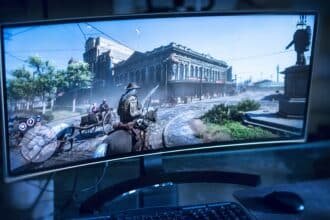The gaming industry is no stranger to the rivalry between AMD and Nvidia, two giants constantly pushing the boundaries of graphics technology. Recently, AMD unveiled its latest frame rate boosting technology, FidelityFX Super Resolution (FSR) 3.1, aimed at challenging Nvidia’s well-established Deep Learning Super Sampling (DLSS). Despite the excitement surrounding FSR 3.1, it appears that Nvidia DLSS has taken the lead in the initial rounds of this intense battle. Let’s dive into the details of this face-off and see what it means for gamers and the future of graphics performance.
Understanding FSR 3.1 and DLSS
Before delving into the competition, it’s essential to understand what FSR 3.1 and DLSS bring to the table.
AMD FSR 3.1
FidelityFX Super Resolution (FSR) is AMD’s answer to the demand for higher frame rates without compromising on visual quality. FSR 3.1 is designed to enhance gaming performance by upscaling lower resolution images to higher resolutions using spatial upscaling techniques. This version promises improved image quality and better performance compared to its predecessors, making it a significant upgrade for AMD users.
Nvidia DLSS
Deep Learning Super Sampling (DLSS) by Nvidia uses AI and machine learning to upscale images. By leveraging dedicated Tensor Cores in RTX GPUs, DLSS delivers superior image quality and performance enhancements. The technology has been a game-changer in the industry, offering high frame rates and sharp visuals even in demanding titles.
The Initial Showdown: FSR 3.1 vs. DLSS
The release of FSR 3.1 has generated significant buzz, but how does it stack up against Nvidia DLSS in real-world performance?
Performance Comparison
Early benchmarks and user feedback suggest that Nvidia DLSS still holds the upper hand in terms of performance. DLSS tends to deliver higher frame rates and better image quality, especially in graphically intensive games. The AI-driven approach of DLSS provides a more refined upscaling, making the visuals crisper and more detailed.
Compatibility and Adoption
One of FSR’s strengths is its broad compatibility. Unlike DLSS, which requires Nvidia RTX hardware, FSR works on a wide range of GPUs, including older models and those from competing brands. This inclusivity makes FSR an attractive option for gamers who do not own the latest hardware. However, despite this advantage, DLSS’s superior performance keeps it ahead in the initial rounds.
What FSR 3.1 Brings to the Table
Despite losing the first round to DLSS, FSR 3.1 has several promising features that make it a valuable tool for gamers.
Open Source and Cross-Platform
FSR 3.1 is open-source and cross-platform, allowing developers to implement it across different hardware and software environments easily. This flexibility is a significant advantage, enabling wider adoption and potentially driving improvements over time.
Performance Boosts
While DLSS may have the edge, FSR 3.1 still provides substantial performance boosts. Gamers can experience smoother gameplay and higher frame rates, especially on mid-range and older GPUs. This makes high-quality gaming more accessible to a broader audience.
Ease of Implementation
Developers have praised FSR for its ease of implementation compared to DLSS. This simplicity can lead to faster and more widespread adoption in various games, enhancing the overall gaming experience for AMD users.
The Future of Frame Rate Boosters
The competition between AMD’s FSR and Nvidia’s DLSS is far from over. Both technologies are evolving rapidly, and future updates could shift the balance. Here’s what to look forward to:
Continued Improvements
Both AMD and Nvidia are likely to continue refining their technologies. AMD may enhance FSR with more sophisticated upscaling techniques and AI integration, while Nvidia will keep leveraging its AI prowess to maintain its lead.
Increased Game Support
As developers become more familiar with these technologies, we can expect more games to support both FSR and DLSS. This increased support will provide gamers with more options and better performance across a broader range of titles.
Hardware Advancements
The development of new GPU architectures will play a crucial role in the future of frame rate boosting technologies. Both AMD and Nvidia will aim to integrate their solutions more deeply into their hardware, potentially unlocking new levels of performance and visual quality.
Conclusion
The battle between AMD’s FSR 3.1 and Nvidia’s DLSS is heating up, with Nvidia currently holding the advantage in the initial rounds. However, FSR 3.1’s broad compatibility, open-source nature, and ease of implementation make it a formidable competitor. As both technologies continue to evolve, gamers stand to benefit from enhanced performance and visual fidelity. Whether you are an AMD or Nvidia enthusiast, the future of gaming looks brighter and more exciting with these frame rate boosters pushing the envelope.
















